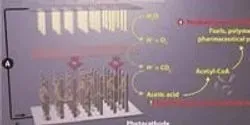Energy

Using a hybrid silica sol-gel material and self-assembled monolayers of a common fatty acid, researchers have developed a new capacitor dielectric material that provides an electrical energy storage capacity rivaling certain batteries, with both a high energy density and high power density.

We ask a lot of the land: feed the world with crops, power the world with bioenergy, retain nutrients so they don’t pollute our water and air. To help landscapes answer these high demands, scientists from the U.S. Department of Energy’s Argonne National Laboratory are designing ways to improve—and hopefully optimize—land use.

Clemson University's Institute of Translational Genomics, led by geneticist Stephen Kresovich, has been awarded $6 million by Advanced Research Projects Agency-Energy as one of six projects seeking to accelerate the development of sustainable energy crops for the production of renewable transportation fuels.

The global industrial sector accounts for more than half of the total energy used every year. Now scientists are inventing a new artificial photosynthetic system that could one day reduce industry's dependence on fossil fuel-derived energy by powering part of the sector with solar energy and bacteria.

Transportation accidents, such as trucks crashing on a highway or rockets failing on a launch pad, can create catastrophic fires. It’s important to understand how burning droplets of fuel are generated and behave in those extreme cases, so Sandia National Laboratories researchers have developed 3-D measurement techniques based on digital in-line holography.
















